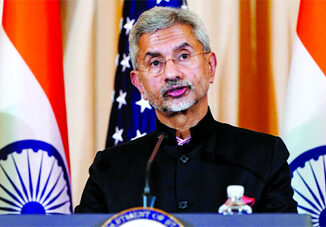
Located in South-Eastern Rajasthan, Chittorgarh is known for Chittorgarh Fort, the largest fort in India built on a hilltop, spreading over an area of around 700 acres. The capital of the erstwhile kingdom of Mewar, the magnificent fortress will always be remembered for the courageous self-sacrificing Jauhar performed by Rani Padmini to thwart the conquest of the fort by Alauddin Khilji. Chittorgarh stands at the helm of Chattari Rajput pride and is remembered in the pages of history for its glorious battles, especially the siege of Alauddin Khilji. Once known for its grandeur and opulence, today, Chittorgarh has left its tales of bravery and betrayal far behind to catch up to commercialization. It takes a few hours to cover the fort complex on foot. Wear comfortable footwear and keep a water bottle handy.
Rana Kumbha Palace is the largest structure in Chittorgarh fort, and while it is now a mere tumbledown structure of broken walls and piles of stones, it was once a magnificent three-storied palace with gigantic pillars, maze-like underground tunnels and intricately designed architecture. The most famous attraction in Chittorgarh fort is the Padmini Palace, named after Queen Padmini herself. Replete with roof pavilions and water moats, the story of Queen Padmini’s valour rings out loud in every corner of this dilapidated building.
Chittorgarh Fort
Built by local Maurya rulers (often confused with imperial Maurya Rulers) in 7th century A.D, the Chittorgarh Fort in Rajasthan is one of the largest forts in India. The Chittorgarh Fort, plainly known as Chittor is spread majestically over a hill of 590 feet in height and is spread across 692 acres of land is a fine example of the popular Rajput architecture. The imposing structure of the fort has many gateways built by the later rulers of the Maurya clan. Chittorgarh Fort was previously the capital of Mewar and is now situated in the city of Chittorgarh. Chittorgarh Fort reverberates with tales of heroism and sacrifice and displays the Rajput culture and values in the real sense. Owing to its magnificent edifice, the Chittorgarh Fort was declared a UNESCO’s World Heritage Site in the year 2013.
Padmini Palace
Padmini Palace is the palace where Rani Padmini lived after she married Rawal Ratan Singh, the ruler of Mewar Kingdom who ruled between 1302 and 1303 CE. The majestic palace is a historical monument related to the self-sacrifice of Rani Padmini after Chittorgarh was attacked by the Sultan of Delhi, Alauddin Khilji. The two storey monument stands rather strong right at the centre of the Chittorgarh Fort elevated on rocky terrain. The fort is surrounded by a lotus pool which adds to the charm of the monument. One can imagine how glorious this site would have been when the royal ladies used it, the pool having colourful lotuses depicting grace and beauty in the rugged Chittor Fort. Those exploring Chittorgarh Fort must visit the Padmini Palace.
Rana Kumbha’s palace
Rana Kumbha palace is where Rana Kumbha lived and spent his royal life. Its charming and artistic architecture makes it a must visit for tourists visiting Chittorgarh.
Lord Shiva temple in the nearby and light and sound show in its complex makes it an unforgettable experience.
Kalika Mata Temple
It is one of the most important temples of Chittorgarh and the city’s tour isn’t complete without a visit to this temple. The splendid sculpture of the temple is what attracts most tourists. It is dedicated to Kalika an incarnation of Goddess Durga. The entire temple, built on a platform, boasts of Prathira architectural style. The ceiling, pillars and gates all have intricate designs. Even though the temple is partially in ruins, one will still marvel at its architectural credibility. Source: Holidify





Be the first to comment